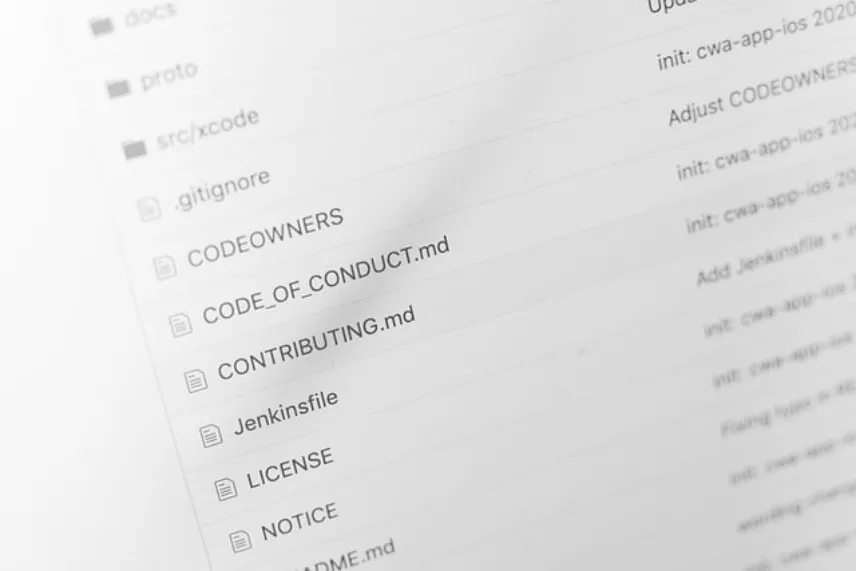
As you explore the realm of altcoins, every now and then you would find coins that are based on Bitcoin’s code or even protocol — so-called forks. What exactly are they (spoiler: there’s different types!) and how does a thing like blockchain split even happen? This is what you will learn from this guide, as well as not to dismiss those as a thing of the past with insights from the author.
What is a Bitcoin Fork?

A fork in Bitcoin can refer to a few things at once, so context matters. It can mean a chain split that does or does not result in a new cryptocurrency, or it can mean a tangible change in protocol. In any case, it has nothing to do with cutlery: the term ‘fork’ comes from software development, where it means creating a new branch of software to modify it later (but not necessarily), independently of the original.
A blockchain can split accidentally or intentionally. Accidental splits can be a result of bugs or clock skews and usually quickly resolve themselves, leaving orphan blocks behind. Intentional splits come from both events that define a fork: a change in protocol can cause a permanent split between miners.
It’s the intentional splits that produce lasting effect on the network, and Bitcoin is a colorful example. Most likely, because an intentional chain split is an event that creates new cryptocurrencies, and holders of the original get to have both. However, as they go their separate ways, so does their performance, future and the prospects.
Types of Forks, Hard Forks vs. Soft Forks

Because context matters to know one type of fork from another, they use handy descriptors to help you sort them out. First off, there are source code forks or project forks, and they mean the same thing as in software development: a project that was built using the code of another preexisting project. Bitcoin is an open-source project, so naturally it has many forks: Litecoin, Dash, Syscoin, Groestlcoin, etc. So, the phrase ‘Litecoin is a fork of Bitcoin’ actually means that this cryptocurrency runs on a modified version of Bitcoin’s software. These Bitcoin offshoots have never had any common transaction history with BTC.
Then there are soft forks. Just because they don’t create seismic shifts like a chain split does not mean they are insignificant: Taproot and Segwit were BTC soft forks. They are backwards-compatible updates to the blockchain software, and a newer version releasing does not require the majority of the network to migrate to new software. Curiously enough, in blockchain development its meaning is slightly different from the original ‘friendly fork’.
What is a hard fork in a blockchain? If a soft fork is an update, a hard fork is an upgrade. As in, ‘upgrade or be left behind’. A hard fork, meaning protocol changes, introduces modifications that are incompatible with previous versions, so it is an absolute must that the majority of the network uses the latest version. What happens if they don’t? Since the old version can’t follow the new rules, it will keep creating blocks following the old rules, causing a split. This is what we have witnessed with Ethereum when a faction of miners refused to upgrade to Proof-of-Stake and branched out to EthPoW.
Not all hard forks change the protocol—some change the history. Quite in a literal sense, the transaction history: this is the origin story of Ethereum Classic, which is actually the original chain without the changes introduced by the Ethereum community to reverse the DAO hack, which caused millions of dollars in value to be lost.
Notable Bitcoin Forks
Going back to Bitcoin, as the original cryptocurrency, it naturally has quite a few forks of all described types. The ones that people tend to focus on, though, are hard forked offshoots due to many reasons. One, they share ledger history until the moment of a split, meaning coin holders keep the balances in both new networks — like airdrops before they were a thing. Another is the reason chains split—heated community discussions and even drama, ideological clashes and so on. You will see as we cover the differences introduced in these BTC’s hard forks and why and how they came to be.
Bitcoin Cash
- Key difference: 8 MB block size, old transaction format
- BCH Hard Fork Date: August 1, 2017
Going off of metrics such as hash rate and market value, Bitcoin Cash (BCH) is currently the most prominent fork of BTC. The core difference that has caused a significant part of the community to part their ways with the main team in 2017 was the solution to the scalability problem. The Bitcoin Core team, the majority, proposed to introduce Segwit (Segregated Witness), which would split witness data from transaction data in the block. Cutting through the technical jargon, they offered a way that would make more transactions fit into a block without increasing its size.

This method, however, was criticized due to potentially creating scenarios that exploit transaction malleability: a vulnerability which involves altering a hash, such as a digital signature, which is basically an ID for each action. The Bitcoin community was well aware of the severity of transaction malleability, as this was the very exploit that led to Mt.Gox going under. Thus, a part of the community preferred to keep transaction and witness data together (which occupies more space in the database) but instead, increase the block size. After attempts to introduce software clients that would raise the block size to 2 or 8 MB (up from the original 1 MB), a portion of the Bitcoin blockchain finally diverged to become Bitcoin Cash.
If you would like to learn more about the differences between BTC and BCH, we highly recommend checking out our comparison guide.
BSV (previously Bitcoin SV)
- Key difference: 128 MB block size, lifted entirely in 2020
- Date of split from BCH: November 15, 2017
Although it has split not from the Bitcoin blockchain directly but from the Bitcoin Cash blockchain, Bitcoin SV (or Satoshi Vision) is still considered a part of this conversation. One major reason is in the name: the Bitcoin SV (BSV) proponents actively believed that their branch is Bitcoin as it should be. The most telling evidence is that the project uses the 2009 original Bitcoin whitepaper as its own.
How did they approach the scalability problem, you would ask? Raise the block size cap further? No, they eventually did away with it entirely. Instead of nurturing decentralization of miners, they introduced changes that make it accessible to professionals only but also massively expanded the scaling capabilities. They also went all in on the script functionality, enabling smart contract infrastructure and tokenization. As a result, the BSV network became a lot more active in terms of amount and frequency of transactions but at the same time, their value and associated fees became fractions of the original’s.
However, this is not what this spin on Bitcoin (and an actual Bitcoin Cash hard fork) is usually known for. Early BCH also fell into two camps: one that was fine with the changes and another that insisted they be taken even further. On top of that, there may or may not have been a clash of egos between the most prominent figures in these camps. The latter rallied around Craig Wright, a scholar who also claimed to be the pseudonymous Satoshi Nakamoto, the creator of Bitcoin. For years, the opposition between those who believed him and those who found the claims outrageous was a heated one. That is, until 2024, when Wright lost his legal battles and the fork rebranded to BSV Blockchain.
Bitcoin Gold
- Key difference: new mining algorithm
- Date of split: October 24, 2017
Admittedly, BCH and even BSV stood the test of time and remain in the public consciousness even in 2025. However, there are even more Bitcoin hard forks that are all but forgotten but were relatively big at first.

One of them is Bitcoin Gold (BTG), which split off the BTC chain in October 2017. In the new network, every preexisting Bitcoin address has received an equal balance of BTG. And judging by BTG losing about 80% of its initial peak price, which is also still the current all-time high, the vast majority of holders sold it off.
What prevented it from becoming more popular? The key change that was made in this client is the mining algorithm, from SHA-256 to Zhash, to make it more ASIC-resistant and, therefore, decentralized. However, whether a split chain lives or dies depends on miners who contribute hashing power. Forcing them to change equipment and setups is not going to be a popular move, and while BTG has found some support from miners who supported the idea, it is far from anywhere close to Bitcoin’s adoption and value.
Lesser Known BTC Forks
By the same logic that includes BSV in the conversation about Bitcoin forks, eCash (XEC) is also one! You see, after BSV split off from BCH (and not without a fight), the community disagreements started once again. This time, regarding the so-called developer tax: a portion of the transaction fees to fund development, that would otherwise go to miners. BCH Node did not accept this and won the network majority to keep the ticker BCH. The BCH ABC camp introduced that tax in a minority chain that was renamed eCash. XEC also went to introduce a massive amount of protocol changes, from staking to Avalanche post-consensus, so it is not surprising at all that it is barely recognized as a Bitcoin fork anymore.

There have been a few more cases of chain splits, accidental and intentional, in Bitcoin. Some of the split chains are even supported to this day, although not at the level that even Bitcoin Gold has.
Most contentious forks of Bitcoin occurred in 2017, and even then keeping a split chain alive was no simple task. Other hard forks from that year include Bitcoin Diamond (distributed BCD in 10:1 ratio to BTC addresses) and Super Bitcoin (increased the supply and “rewards” with premining). This was not new, as in 2014, an anonymous developer launched Clamcoin under a similar premise: to change the monetary policy of BTC, in this case — redistribute value.
Why Fork Bitcoin?
By this point, it’s been mentioned a few times but let’s recap: strong community disagreements about things like scaling solutions can lead to a chain split. This is because protocol changes that cause such a strong divide in consensus would be incompatible with previous versions, thus, can only happen with a hard fork.
As the time has shown, Bitcoin did face serious congestion and scalability issues even after introducing SegWith and Taproot. All the while, its most popular forks that raised the block size limit do demonstrate higher transaction numbers and lower fees but looking behind the curtain, not because more people use them. Per Bitinfocharts, in the past three months, the number of transactions daily in Bitcoin ranged between ~255–629 thousand, with BSV processing 28K to 88.46M and BCH seeing 9 to 79 thousand. The median value of these transactions, however, ranges from $75 to $570 in BTC and $0.05 to $316 in BCH, and BSV’s consistently well below a cent.
Arguably, any community-backed hardfork at least tries to pretend to introduce some kind of innovation to Bitcoin’s protocol. That being said, there are examples to the contrary, where all the developers did was tweak the supply dynamics of BTC.
How Communities Handle Forks

As we have seen, these hard forks often come about as a result of some kind of schism within the community, be it a question of personalities or ideologies. But how do these forks affect users who are not involved in the thick of drama? It can create inconveniences, ranging from minor to major, on a prolonged time scale. Chain splits are usually announced in advance and may require users to update or install new software, sometimes creating confusion about the necessary version (and things like same formats for addresses or similar branding certainly don’t help). On the flip side, chain splits are also regarded as something akin to airdrop, because users get double the coins in their wallets. Evidenced by most of them losing 80% to 90% of initial prices, however, the majority of users hurried to cash the new coin out while it still has some value.
Forks and campism do not have a great impact on developers, either. They undermine a project’s reputation, so like in software development, contentious blockchain forking is a desperate measure. Developers and projects end up forced to choose a side, which creates ecosystem fragmentation. Developer support shrinks for both versions, and the network health combined is worse off than before.
Probably, the least affected in an event of a Bitcoin fork are historically traders and investors. They get a nice bonus in the form of a new currency, which depending on their view, can add up to their investment or be turned into extra cash. Normally, as recounted by Cointelegraph here, the only metric experiencing strong change at the time of a Bitcoin chain split is market volatility. Of course, the reputation tax is not ignored by investors, as it undermines the fundamentals of the digital asset.
DIY Bitcoin Fork: How To (Theoretically) Make One
There are not a lot of Bitcoin offshoots in comparison to other assets like Ethereum tokens. A logical conclusion would be that it is easier to make the latter than the former. Still, if you are curious about what forking Bitcoin entails, let’s imagine that.
All changes made to the protocol are introduced in the Bitcoin software, so the first thing you can do is to fork Bitcoin’s codebase. That would be the node software for keeping records and adding them, validating transactions, producing blocks, etc. From here, you should be able to change pretty much anything, including whether to start a new, separate blockchain or not. It is also at this point that the developer presents their proposal to the community to secure initial support.
The new protocol, if the node software is valid and working, will implement new rules at a predetermined block. From there on, there will be two separate chains with their own protocols. Unless this new chain is not supported by a network of nodes and hashing power, it may not survive for long.
Given that all changes are made to the node software (client), it is crucial to have not just miners or validators at the execution level but also nodes with your client installed to support the network level.
It may still be possible to fork Bitcoin today but not without proposing valid and popular changes that would satisfy demand from at least a part of the community.
Do Bitcoin Forks Have Any Future?
Speaking of future forks of Bitcoin, some crypto enthusiasts speculate that one is on the horizon right now. In the same Cointelegraph article, the author Michael Tabone highlights a 638% uptick in the number of nodes using the alternative to Core, Bitcoin Knots client. Its developer Luke Dashjr is a vocal critic of OP_RETURN-enabled applications of the Bitcoin blockchain such as Runes and inscriptions but he is also against the policy other BTC developers seem to be taking. To preserve the transactional use case and prevent spam in the network, they want to crack down on the extra fluff, which raised concerns over neutrality of the network. In protest, hundreds of users migrated to Knots, which does not enforce spam filters unless configured, and now account for about 13% of the network — and growing.
In this case, the disagreement over acceptable use cases is once again becoming a trend that can cause a schism. Is Bitcoin going to split, like in 2017? The probability of that is still on the lower side but it is no longer out of the question entirely.
In any case, the long-term impact of any future fork may be more serious than before, with Bitcoin underpinning far more value than ever. Governments, asset manager giants, corporations are increasingly betting on the digital gold—how will they react to the fact that the devs are fighting and sullying the reputation of the whole project?
This also raises the question of how long will community governance be the norm in Bitcoin. The growing discontent in the Core community stems from dissatisfaction over a small clique seemingly dictating rules with no regard to the community’s needs. Miners securing the network and having a say in the consensus are also no longer regular Joes—it is a competitive business where millions are at stake. At this rate, community governance will not look like a forum discussion but we may yet see the block wars of the future.
We hope you enjoyed the article! The crypto world has many more exciting topics to offer, which we cover in our blog. If social media is more of your thing, follow us on X, Facebook, and Telegram!
Frequently Asked Questions
What are forks in Bitcoin?
Since Bitcoin is software, the usual definition of a branched version applies to it too. There is also another meaning of fork in relation to blockchains, which includes accidental or intentional chain splits. ‘Bitcoin fork’ can mean either a project fork (Litecoin, Dash etc.) or a chain that split from it and received community support: Bitcoin Cash, Bitcoin Gold etc. Hard fork in crypto usually means the latter.
How many forks of Bitcoin are there?
Since a lot of split chains become orphaned blocks or abandoned forks, it is hard to say an exact number without extensive blockchain analysis. By different estimations, there are only about five active Bitcoin hard forks, although some of these chains have also split after the fact.






